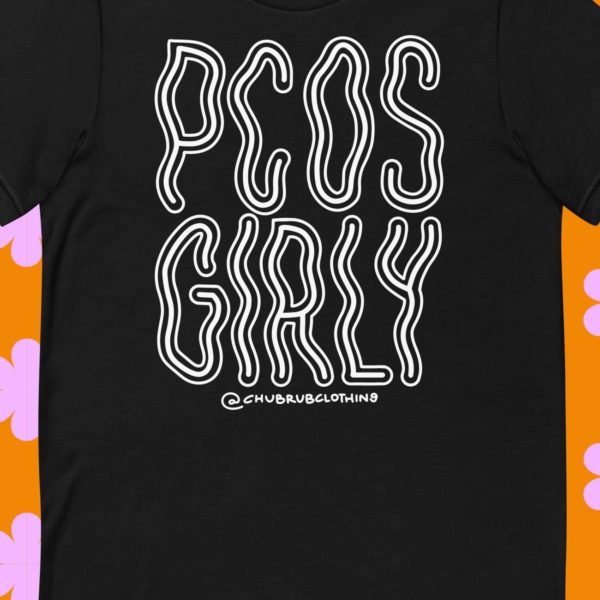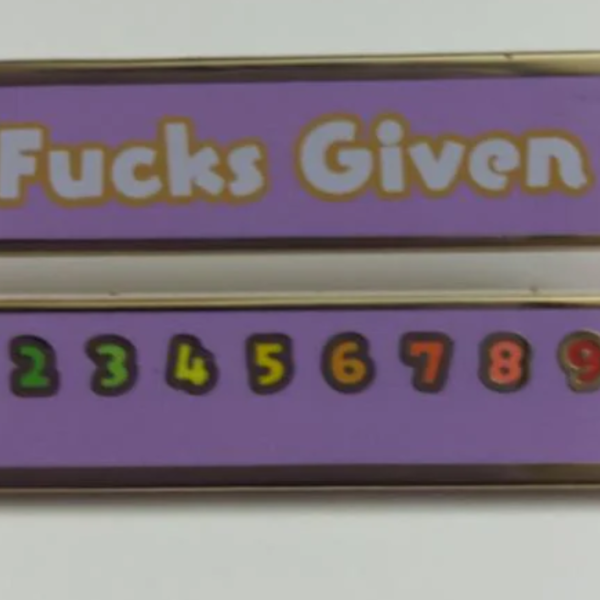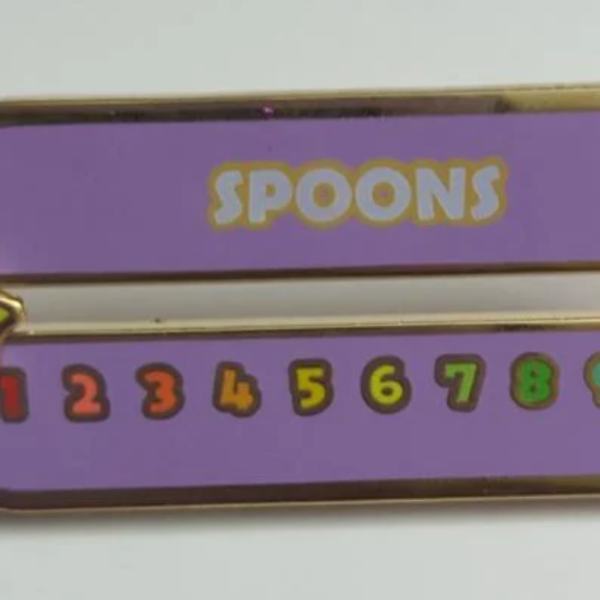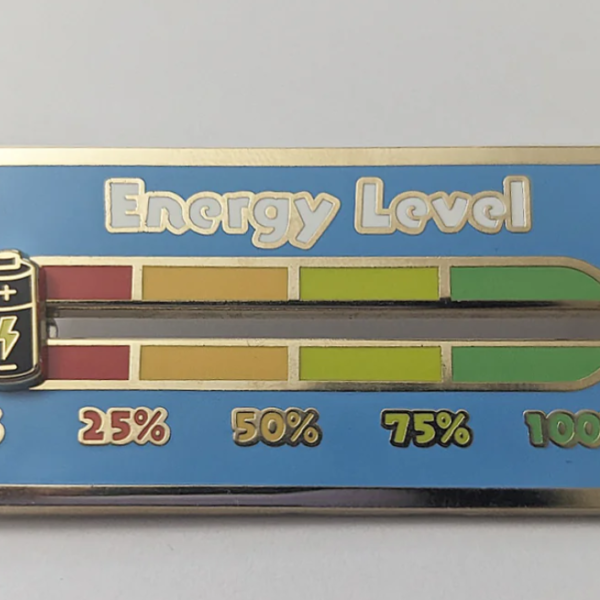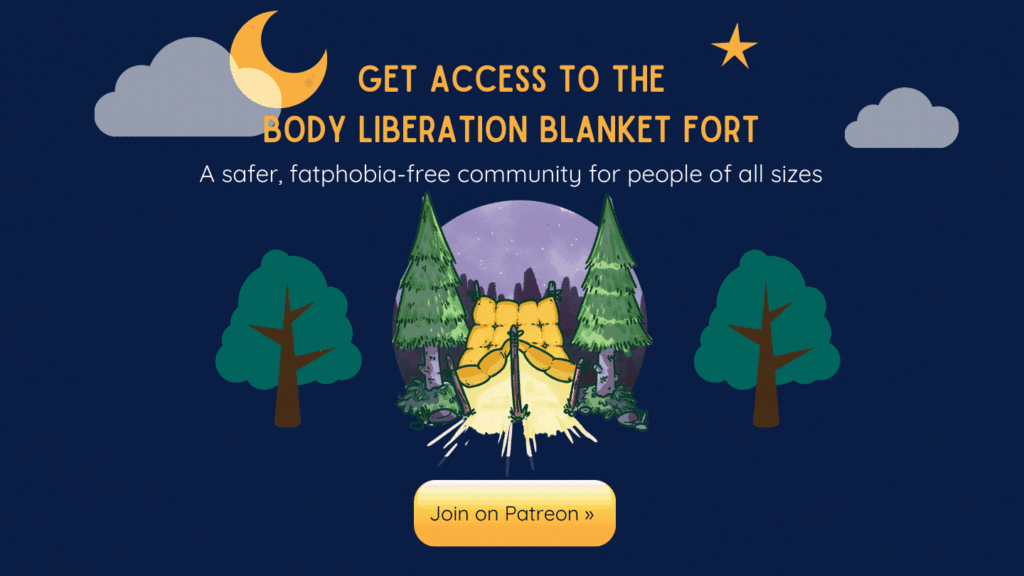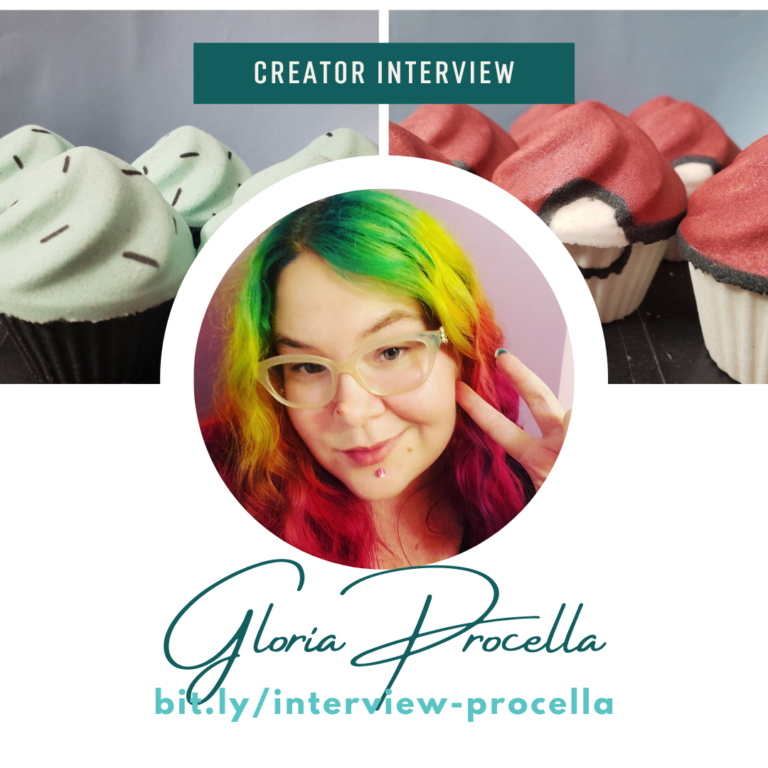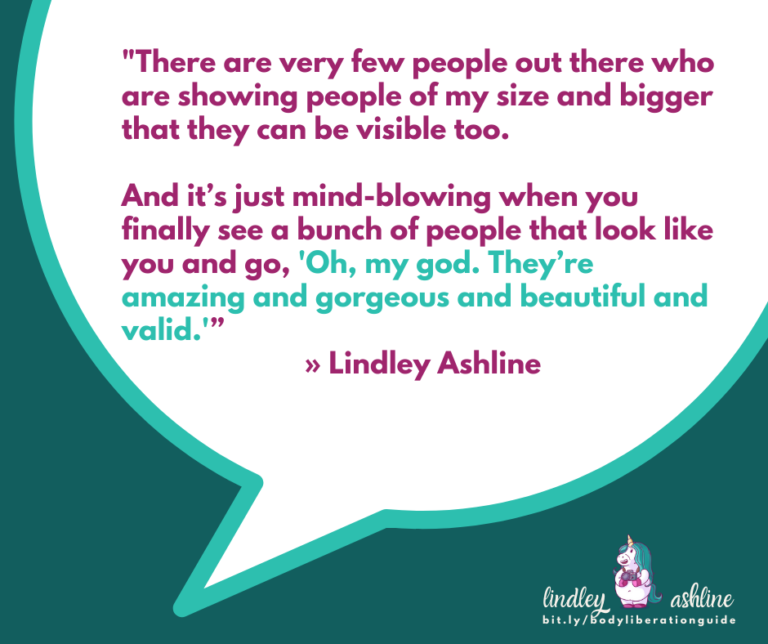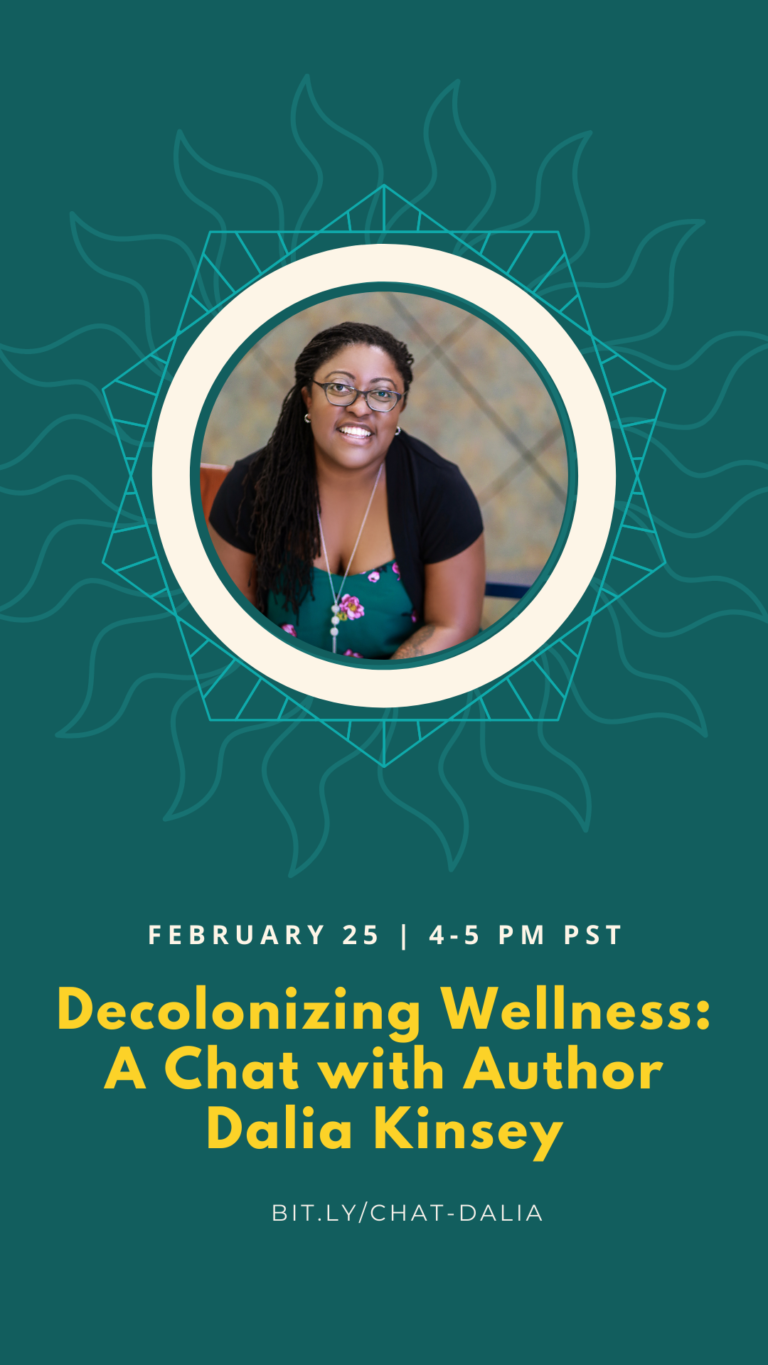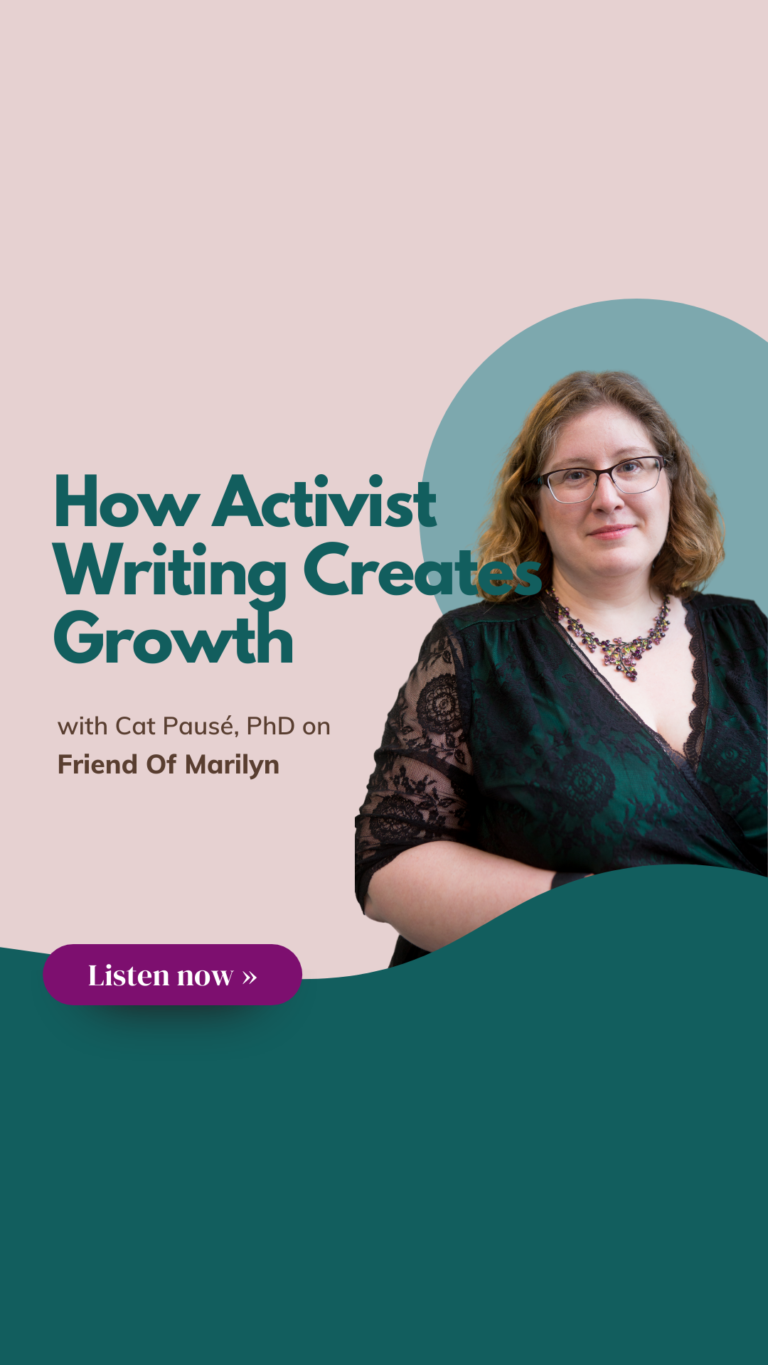LISTEN: Lindley on the Running Life Podcast (with transcript)
Image description: A fat white woman in pink t-shirt and black pants runs towards the camera along a wooden bridge surrounded by a green forest.
When you think of a runner, what image pops into your head?
Most of us come back to the same image informed by the stock photos we see and use papers, magazines, and the books we read. Looking for images that deviate from that one in our mind can be a little bit tricky. MK Fleming, the host of Running Life podcast, remembers a time searching through stock photos for anything to use on their episode about running while black. It was hard to find a black runner, much less a black runner that didn’t look like a bodybuilder.
And that’s the problem with representation; the further you are from that image, that stock photo in your mind, the more aspirational fitness becomes and the less that you feel like you fit in that universe.
MK says, “This is why Lindley Ashline is so important to me in doing Google searches. I found the world’s largest repository of really happy people who just happened to not be too thin to function, doing things that I like doing, the kind of stuff like me and my husband and my employees, and my friends.
Lindley Ashline is a Seattle based photographer, author, cat, mom, fat art curator, musician, and fat acceptance activist. She is also the creator of Body Love Shop, a curated resource for body positive and fat positive artwork, crafts, books, goods, and accessories. Like us, Lindley is taking a stand by refusing to be defined by conventional beauty standards.
People who are free of self-loathing have grown in their sense of self so much. They don’t just live in their bodies, they celebrate them. I think that means they count their wins. Just like we do here at the fitness protection program, through her work, people who don’t see bodies like theirs represented anywhere else, get to reclaim their self-image, and join the party.”
Listen to the podcast above or read the transcript below (and visit MK’s site at Fitness Protection).
Transcript
Lindley Ashline: Bodies in motion… we go through so many changes in the way that we’re moving from microsecond to microsecond. That’s why you don’t generally see photos of people talking. We’re smiling or we have some kind of expression, but we’re not talking. And it is because it’s that same bodies in motion thing.
So, if you are seeing photos of yourself in any kind of motion, you’re normal. You are not uniquely awkward or uniquely ugly because you do not look like a Photoshop stock photo of an idealized body that has been taken beyond idealized with a computer. In motion, nobody looks like that.
So, if you take away one thing today, take away “my awkward marathon photos,” or “my awkward yoga photos,” or “my awkward whatever photos.” It’s just as good as anybody else’s. It’s not about the body. It’s that we don’t really have the technology to capture bodies in motion in a still photo, in a split second, in a way that—it doesn’t work for anybody. It’s not you.
Intro: Hi, I’m Coach MK, founder of the Fitness Protection Program. I’m a run coach, not a life coach. We’re never really talking about the running. Running is the tool. It’s the conduit we use to examine the world we live, as well as its impact on our own lives, and the lives of the people around us. How we react to certain people and to certain stories tells us a lot about how we view ourselves.
I’m committed to the thoughtful, intentional exploration of the importance of running so that no one discounts their own badassery… ever.
A final note… this podcast is here towards every runner who won’t lose their home, livelihood or health insurance if they show up to the corral with a hangover—not that I’m encouraging you to do that, I’m just saying.
Sit back, relax, and enjoy the Fitness Protection Podcast.
New at Body Liberation Stock
Coach MK: When you think of a runner, what image pops in your head? Most of us come back to the same image informed by the stock photos we see and newspapers, magazines, and the books we read.
Looking for images that deviate from that one in our mind can be a little bit tricky, like that time I was searching through stock photos for anything to use on our episode about running while black. It was hard to find a black runner, much less a black runner that didn’t look like a body builder.
And see, that’s the problem with representation—the further you are from that image, that stock photo in your mind, the more aspirational fitness becomes, the less that you feel like you fit in that universe, the less inclined you are to try the thing. You already didn’t fit before you started.
This is why Lindley Ashline is so important to me. In doing Google searches, I found the world’s largest repository of really happy people who just happen to not be too thin to function, doing things that I like doing, that kind of look like me, my husband, my employees, and my friends. And I’ve probably spent an hour going through every single picture before I started stalking her, trying to get her to be on this podcast.
And it worked! Yay!
Lindley Ashline is a Seattle-based photographer, author, cat mom, fat art curator, musician and fat acceptance activist. She is also the creator of Body Love Shop, a curated resource for body positive and fat positive artwork crafts, books, good and accessories.
Like us, Lindley and her clients are taking a stand by refusing to be defined by conventional beauty standards as people who are free of self-loathing, who have grown in their sense of self so much, they don’t just live in their bodies, they celebrate them.
I think that means they count their wins just like we do here at the Fitness Protection Program.
Through her work, people who don’t see bodies like theirs represented anywhere else get to reclaim their self-image and join the party.
She’s our kind of people. And we are thrilled to host this conversation with her today.
Welcome, Lindley.
Lindley Ashline: Thank you. How can I not be anything but super pumped up after that intro?
Coach MK: Well, we want everyone to be pumped up. Most of the time, I think—is it fair to say, Nikkia, Coach Nikkia, that I have not necessarily been my usual pumped-up self for two months, but I was able to find it when looking through her photos?
Coach Nikkia: See, your lens are good. That’s good because we have not had our normal MK.
Coach MK: Yes, but she’s here today, man. Before we go any further, can you introduce yourself to the good folks because you are probably the greatest accidental treasure I unearthed in—was it 2018 or 2019?
Coach Nikkia: No, it was last year. It’s almost been a year. 2020 has literally gone on for an eternity.
Coach MK: I know, right?! There’s the Boston Marathon canceling phase of quarantine. Then there was the Tiger King phase of quarantine.
Coach Nikkia: That was fun. That was where the stimulus checks went. And then it got bad from there. It just went…
Coach MK: I remember in the beginning, I was so like, “This is so nice. My husband isn’t traveling for work for the first time in our marriage, and I still like him. Oh, my god. I really like being—”
I was worried. We were watching cracks happen in the relationships around us. He travels for work four days a week as long as I’ve known him, sometimes longer. But yes, it’s really great. I get to sleep next to somebody. I see why people let pets in their beds. That is probably why. I thought, “This was going to come back to bite me.” But it’s like, “Oh, there’s something warm here all the time. It’s amazing.”
Coach Nikkia: Literally, 2020 has been so long. But actually, it’s just been about a year because I left for Berlin almost a year and a week ago, or a year and a week in the future. So it’s wild to me that that amount of time has taken place because, oh my god, it feels like an eternity.
New in the Body Love Shop
But I am Nikkia Young. I am a #plussizerunner. I am a marathoner. I am run coach, not only through Fitness Protection, but also in my local community here in Richmond, Virginia (former part of the confederacy if you want to get down that road. That’s been a blast!)
But I have been on this fitness journey thing since college. And even before, I’ve played sports. But really, it was never really about losing weight. It was more about just moving in my body. And yeah, I fluctuated a little bit. And now, I’m getting to that state where I just want to be strong enough to where I can do everything I want to as I get older. So that’s been more of my thing. And it’s been a blast.
I think that also by showing my body and my person, albeit all that it holds and all that it does for me—thank goodness—finding that gratefulness in running, that has tied that self-love piece into it. It’s been really great. And as much as you probably get all the, “Maybe she shouldn’t do that. She’s too funny… blah-blah-blah…” For all of that, there’s somebody—I don’t hear it. I don’t often hear it, but there’s somebody who needed to see someone that looked like me—even if they don’t look like me, but seeing someone that looks like me doing what I enjoy and what I love, and loving myself, inspires others. So that’s where I bring some pieces through this fun story.
Coach MK: And the discovery of Nikkia… someone sent me a picture from Instagram. There was a big, long explanation underneath it about crying on the curb after the end of the Berlin Marathon. And above it was the picture of Nikkia running in front of the sideway. And I’m like, “That’s such an incredible picture.” I love that! They have used that in their marketing. And it brought her and some other fat, black running influencers to run the Berlin Marathon to expand that image that “you can do this too,” promising them that they would be allowed to cross the finish line and get an official medal and an official finish line… which is a big deal for a marathoner. And they lied.
Not only did they not get a medal or an official time, they blocked it! They couldn’t even cross the finish—which is where Nikkia, who had brought her family to Germany for the first time, sat down and cried on the curb.
Now, I read this, and I had smoke out of my ears. I jump in through the computer because I’m that white woman that she’s going to be like, “Yup! This fitness industry is terrible. They’re awful. Something similar happened to my husband. I am still salty about it.” I took to the race director. When he sees me coming, he goes the other way […]
But I felt like I just wanted to bring her some calm and offset that experience. I was still figuring out what I wanted to sponsor. But I knew that if we were going to give anyone money, it wouldn’t be people at the front. We take the back of the pack and put them front and center where they belong. Their space is just as legitimate. They’re the anchors that keep this race happening. It isn’t over until that last person crosses. And people need to remember that.
So luckily, she was like—yeah, it took a while to get through to her. I started coaching her one on one just, again, for free. I just want to even out the permit in the universe. And then later, our work together inspired our now sponsored athletes.
But we just added our fourth. So that’s where that came from. And it all started from a picture.
So when I think about how important that imagery is, not just because you said to me immediately, “Well, I’m not a runner,” and I’m like, “We’re not going to spend this whole time talking about why you are not. And I’m not trying to sell you on it. But rather, it is interesting that…”—
Nikkia is way more athletic than I am. I can’t run, and I also can’t see here. I have no depth perception. I can’t throw balls. I’m done. I might get on a recumbent bike and just lay on the floor and do this in the air with my feet. I will not be getting a TRX Certification. She does a lot of really strong people stuff. It scares me, oh my god!
So tell us a little bit more about your journey to get here, if you don’t mind, to that amazing repository of photos, and your incredible weekly newsletter. How many subscribers do you have? That is one of the best things I read every week… and I read a lot.
Lindley Ashline: Well, I have about 4,500 subscribers right now. And I’m Lindley. And I am in the house plant phase of CoVID. That’s the phase that I’m in. I now have 63 house plants, about 53 of which were acquired in the last three months. And that’s my happy place right now.
Coach MK: Which one is your favorite so far?
Lindley Ashline: This new one. My goal is to keep it alive. But my favorite is this tiny, little Alocasia tiny dancer that I have. They’re called tiny dancers because they only get about 18 inches high. And you didn’t know when you subscribe to the Running Life Podcast that you were going to hear about plants, did you?
Coach MK: No! Well, we always like to say we are never really talking about the running. There are probably lots of people right now that are like, “I have an herb garden in my bathroom” or something.
Lindley Ashline: The most important thing to know about gardening is that there’s always more at the nursery. But it’s really the lowest stake hobby in the universe. I’ve been killing stuff for a really long time—all plants. All plants, mind you. I’ve been killing plants for a long time, and you gradually improve because there’s always more.
But yes, I have an Alocasia tiny dancer. That is my baby right now. And it’s only about six inches high, and it’s very, very graceful and willowy. I love it!
At any rate, my wonderful introduction showed I have my fingers in a lot of different pies. But also, I’m not an athlete. I’m not a runner. I’m not a yogi. I don’t do Pilates. I don’t lift weights. I’m a house cat. I move when there is something I need to accomplish, usually in the pursuit of food or comfort because I’m a house cat. And I will say that it was actually a really important of my body acceptance journey to realize that I didn’t have to exercise, that I could if I wanted to, but I wasn’t morally obligated.
And as a photographer, photography is actually a surprisingly athletic profession. It requires quite a bit of stamina. You spend a lot of time—or at least I spend a lot of time when I’m photographing. I’m stretching above someone, or I’m rolling around on the ground underneath them. I do so many squats when photographing, you would not believe. I will be sore for days because I’ve just done 56 squats and not even realize it. But if you told me to sit down to like, “Give me ten squats,” I’ll be like, “Hell, no!”
But if it’s something that I want to accomplish, or like I said, I like plants, I have a yard, I do yard work, I grow roses and I grow herbs… I’ll go out for the purpose of accomplishing taking care of my yard, or the purpose of photographing someone or something.
But it’s really, really interesting to be here as a dedicated non-athlete because when I talk about moving for the purpose of a specific goal, a lot of what I do is move for the goal of showing other people their bodies and that they’re allowed to move.
And so, when I photograph an athlete, it’s so cool because of that representation. As Nikkia was saying, the representation isn’t just about giving you in your non-photoshopped, non-professional model body, but it’s to see somebody like you. It gives you permission, but it also shows all the people who might exist in their body that is a little closer to our standard ideal that bodies that are farther away from that can also move and can also be athletes.
If you googled my name, you will find full body photos of me. If you google Ragen Chastain’s name, you will find who is another fat, white woman who is an amazing athlete. Our bodies looks very similar. And she does freaking Iron Man… and I’m a house cat.
So, it’s so cool to be able to show that all kinds of bodies—and not every single person that I photograph has a bigger body, but none of the people I photograph look like professional models because they’re not. And that, when we talk about stock photography—and I’m actually going to define that right quick for anybody who’s not familiar with that.
Coach MK: Do it!
Lindley Ashline: Stock photos are the photos that companies buy and bloggers buy (and a company can just be one person), but it’s what companies buy to use in their marketing, and on their social media, and on their blogs, on their brochures because, most companies, even big ones, are not going to pay a photographer to do a special photo session or a photoshoot just to come up with photos for a blogpost. They’re going to go and buy them.
And so, stock photo repositories or stock photo websites are where they buy these from. And some of the big ones are Getty Images, iStock Photo, Graphic Stock, Green Stock. There’s a ton of them out there. And some of them are paid, and some of them are free. There are free ones like Unsplash and Pixabay. And they are all, all of them, are wonderful resources to represent a human body. But only certain bodies get represented.
It’s an industry where 99.9% of the bodies that are represented are young, thin, usually white, usually cis-gender, usually straight, and so on and so on. And these people are actual models. It’s what they do, amateur or professional. They move in certain ways, and they are seen in certain ways, and they pose in certain ways because that’s what trained models do.
And so, even when you get a slightly larger body on these sites, they are still photoshopped. And they are still not going to be representative of what I might look like if I went out for a job, or what Nikkia might look like, or anybody else because they’re actual models… and so they look like models.
They don’t just look like regular folks out for a jog or whatever. And that’s before you get Photoshop into account.
And so, when we talk about evening out the karma, evening out the playing field, for me, it’s sort of rebellion against—
You know, in my corporate marketing background, which is where I came from before I quit my job to become a photographer, I had to buy stock photos, and I had to use stock photos. And I only had this one small set of bodies—small in the number I could choose from, and also, small was the only body size that I had to choose from. I only had this very limited selection of bodies. And it’s like, okay, but not every construction worker is going to be a thin, white, cis-gender man with the exact salt and pepper hair, looking at a blueprint […], or not every office full of people is going to look like—
You have seen this photo, I guarantee you. And you will never unsee it. It’s this diverse board room photo. They are standing behind a conference table, in front of a window. There are three white men of various ages, one Asian woman, and one black man. And they are all thin. And everybody is cracking up because you know! You know! Once you see it, it’s everywhere.
Coach Nikkia: It’s on every corporate website, on their careers page.
Lindley Ashline: …or the black man and the white woman shaking hands.
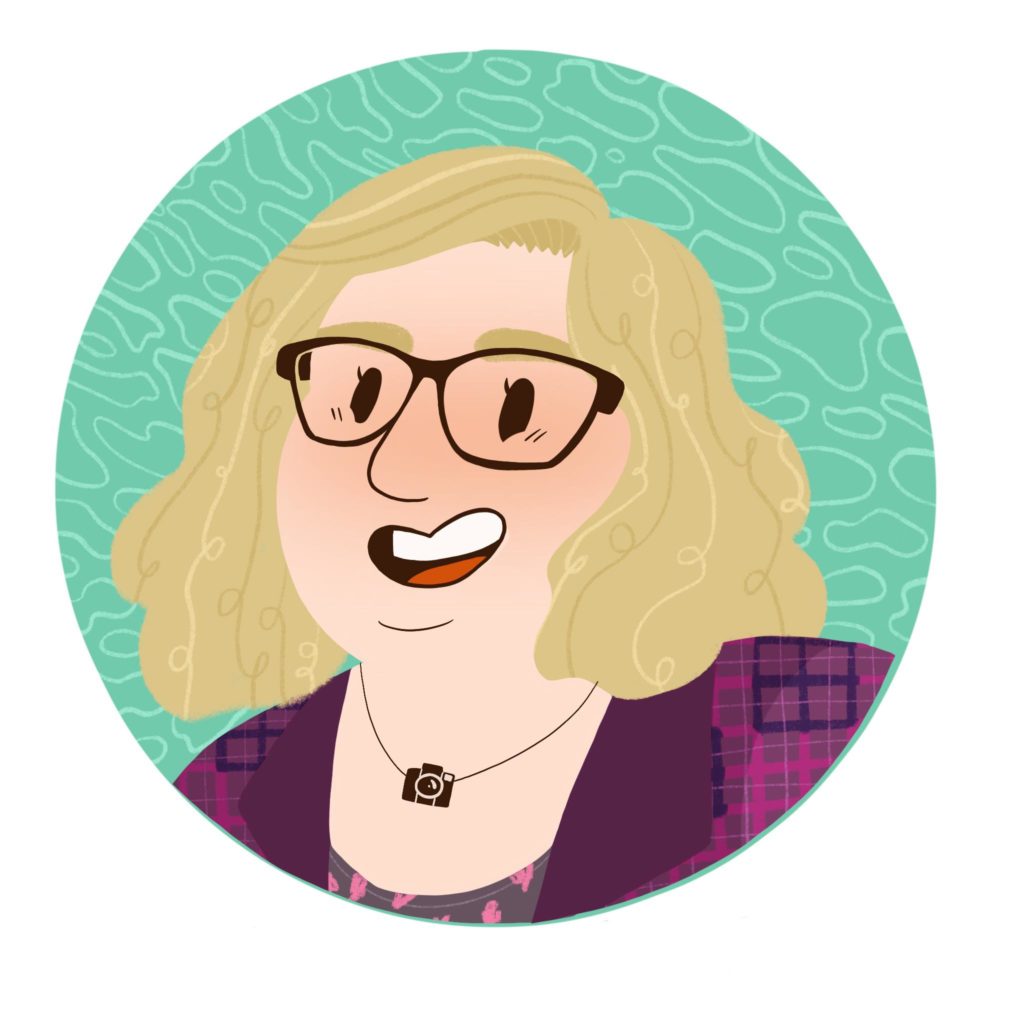
Every Monday, I send out my Body Liberation Guide, a thoughtful email jam-packed with resources on body liberation, weight stigma, body image and more. And it’s free. Let’s change the world together. Subscribe »
Coach Nikkia: Ooh, that’s my other favorite.
Coach MK: We’re laughing, why? Because there is exactly one with a different colored skin in it, and they just didn’t go any further. Or that was the first one that popped up.
Lindley Ashline: Right, right! And that’s why they all look the same because people are buying the same ones from these sites.
And when I started doing the stock photos, it was because I got mad. I smile a lot on camera. And I laugh a lot on camera. I’m kind of a crazy house cat honestly. But I get mad at stuff, and that spurred me to action.
And so what happened was I started photographing clients in 2016 with boudoir and portrait photography (which I still do for private clients). And in 2016, Getty Images, which is the grandfather, the big daddy of stock photos, when you see celebrity red carpet photos, those are Getty photographers that take those. They have beautiful, gorgeous, really high-quality, very expensive stock photos that they sell.
And so in 2016, they released a body positive collection. It got a lot of hype at the time. And it was a—you both have your dubious faces on. And those photos were good! They were beautiful. They were high quality. There was a variety of settings, people in different settings and doing different things. And there was at least a scattering of people with non-white skin tones. But every single of these bodies that were supposed to be representing larger bodies were still very small. They were people who were big in the modeling world, who were fat for the modeling world.
Coach Nikkia: Size sold at best.
Coach MK: I remember my friends reacting to that like, “What’s the point here? We’re going to show you how to love your non-white skin? What the *** is this?” That was their reaction because everyone was so small. And that was the beginning. I mean, I recognized it too, but it’s another thing to articulate it and then run with it, because now, you have a rule. But then, trying to make it not that, to be tokenizing and even worse! It takes a while to get to something organic, which is why a lot of white people don’t do anything.
Coach Nikkia: How do you handle that balance? You said one of the big things that—
As a black woman that’s larger, I find that people are striving. And especially now, as we like to call the black lives matter acceptance, it’s like, “Okay! Now, we need to diversify the photos. Oh, my God. Oh, my God. How do we do that?!”
It’s either they get that assignment, and the first they think is “Okay, I got to go gather me some different-looking people.” And then, it’s like, “Okay now, we’ve got one of everybody. Now, everybody, pose.”
So, how do you handle that?
Lindley Ashline: There are actually three different components of this. One of the components is the way that I operate. One of the components is the way the photo looks, like what the resulting product looks like, the end product. And then, the third component of that is how they’re used by people who aren’t me, by people who buy these photos and use them. And I’m actually going to start with the final one first because I do get that question a lot these days, like what is the point of companies buying these diverse stock photos, just so that they can tokenize—isn’t that just tokenizing people in bodies that don’t exactly match the American thin, white beauty standard? Isn’t that just tokenizing?
And the thing of it is, if you were going to buy photos and use them on your site, you have to back that up with action. If you have wonderful photos of black bodies on your website, but you have zero black employees, or you have some larger bodies on your website, but you don’t include larger bodies, your physical thing isn’t inclusive of those bodies, there’s nowhere where I can sit down when I come in, people can tell through their interactions with you as a company or you as an individual whether you are practicing what you preach.
So, putting diverse bodies on your website or your social media is a start. But if it’s that the only thing, that’s when it turns into tokenizing, I feel like.
And so, as far as how the final photos look—actually, I guess it’s really two things. This is the difference between speaking and writing. I’m just combining things on the fly.
So, how I operate is reflected in the final images because there are so many subtleties to the way that you, as a photographer, operate in a way that makes a difference to the end results. And if I say, “Oh, I’m doing diverse stock photograph and I represent larger bodies,” but the only bodies that make available are model fat, then it makes me look like a hypocrite. And it also encourages the people who are buying photos from me to think that they are doing enough by depicting one, black woman who is a size 12, “Oh well, now we showed diversity on our website.”
So, I’m responsible. If I put that out in the world that I’m doing x, I have to actually do x because, otherwise, I’m giving people permission to be hypocritical by themselves.
And this is a new field. Nobody else is doing what I’m doing. And so, I’m just making it up as I go. And I want to put it out there that I do operate from a place of very, very white privilege. I live in Seattle which is very, very white. And if you are watching this live, or you listen to this podcast, and you see where I’m screwing up, please let me know. I’m open to that because when I talk about this, I’m one person. I’m feeling out a new way forward for photographers and for working with larger athletes and depicting larger athletes.
So, I may not be perfect in a way I’m representing this. And that’s okay.
Coach Nikkia: But that’s the point, right? You’re doing the work.
Coach MK: Intentional.
Coach Nikkia: You’re doing the work.
Lindley Ashline: Right, right. I’m doing it in a way that I feel like is the best path forward. And two years from now, I may be cringing at this and going, “Oh no! I need to revise that because that wasn’t good at all.”
But what has seemed to work for me so far, when I put out a model call, sometimes I send these out to an e-mail list that I maintain. That’s where I go first for people. And anyone who wants to be on that list is welcome to be on it. You don’t have to be local… although I am not currently able to pay people to travel in. But you don’t have to be local. Sometimes, if I’m on the East Coast, and I’m doing a session, I might put out something in the e-mail list. But then if I don’t find people in the e-mail list, I’ll go public with the model call.
Coach Nikkia: …which is funny because I was supposed to be in Seattle this year. I was supposed to be in Seattle and run, rock and roll. So if it’s still a race in 2022, I will reach out to you!
Lindley Ashline: Yay! Please do. Yes!
New at Body Liberation Stock
So, what I do is I put out these model calls, and I’m very clear that, out of every one who respond, I prioritize the fattest people who respond. And when I say “fat,” I’m using it as a neutral descriptor. That’s not an insult. I and a lot of other people have reclaimed that word. But I prioritize the fattest people who respond. I prioritize by POC—black, indigenous and people of color. I prioritize LGBT folks, LGBT+. That is not limited to just those letters. And then finally, I prioritize people that I haven’t worked with before simply because it’s good to have the biggest variety possible.
And being in Seattle, it’s been challenging because we don’t have a huge community of color. And because I’m a white woman, people don’t always feel safe showing up to work with me. At this point, I’m pretty sure that I’ve demonstrated, both by my reputation in the community (because people talk to each other) and also, the body of work that I have done that I’m reasonably […] I’m a white woman, but I had to earn that. I had to earn that reputation with people who live in a very fat body.
You know, when I was first starting, if I heard about an opportunity to be on camera, and I was a size 36 or a size 40, how do I know that this random lady is going to be good to my body? How do I know that they’re going to work with me in a non-shaming way? How do I know that I’m not going to be objectified?
We’ve all seen those gross photos of fat people where, clearly, the photographer does not have that person’s best interest in mind. You know what that looks like. I’m not going to explain it here. But you know what that looks like.
Coach Nikkia: And then, later on being black on top of it. And then later on being a different skin color. And then later on maybe you have a situation in your body that you can’t move in certain ways, thinking about ableism and things like that. It’s like, “Oh, you’re right. Most fat photos don’t have someone that’s in a wheelchair, or don’t have someone who uses things to get around.” So, it’s really interesting to think about it. I’ve been very blessed.
The few photoshoots that I’ve been included in, they think about it similarly to how you do, and the entire time, it was how do you feel comfortable or wear what you want. It’s not the look we’re going for. We want to make sure we have the spectrum because the spectrum uses this product… which has been nice. B
ut I know a lot of people have gone to photoshoots and things and were just treated so badly that you’re like, “Wow!” And then, you hear about it later, and you’re like, “Wow! That brand sucks. I’m not going to buy their stuff just on principle anymore.”
Coach MK: Or even the recent Vogue cover. I think it was Vogue. It might have been UK Vogue. The lighting was so bad.
Coach Nikkia: [00:28:24]… if you know what I mean, and not in a good way. They did their make-up wrong. They did her shading wrong. They did everything…
Coach MK: None of it! None of it. It’s like if you knew a black woman was coming, and a beautiful one, who doesn’t pass the paper bag test, it’s not hard to make her look good… it’s really hard to make her look bad.
Coach Nikkia: And they did it!
Coach MK: And they ran it! They should have reshot it or tossed it and said, “You know what? We’ll do this next month because we did it wrong, even if it means we put a white body on there.” But yes, that was such a disaster.
I guess, what I was trying to interject is the level of professionalism, how experienced or how good a person is still doesn’t indicate that they get it when they are dealing with something non-normal. “Oh, we got the best photographer.” Best at what?
Coach Nikkia: That’s a good point.
Lindley Ashline: Right! And I don’t have a reference for this off the top of my head, but I’m sure if you google it, it will come up. But I read something really fascinating last year about how when Kodak Film was developed, when it was created, it was created for white skin tone. I had no idea!
So, from almost this very beginning, photography has been purely created for white people and our skin tone. And there’s fascinating articles out there about video lighting for not only photoshoots, but also like movies, video work and things, on lighting darker skin tone. And it’s wild to me that this is a specialty topic. It’s wild to me! This is news to me in 2019, that film—and I work purely digital. But it wouldn’t surprise me if digital were the same way.
And so, you have to be aware of that too. And I do mostly natural light work, particularly in stock photos, because I tend to take a person to a setting and be like, “Just be yourself. If you’re going to do yoga, you do the poses you enjoy. If you’re running…”
New in the Body Love Shop
Okay, if you’re running, to a certain extent, that’s an artificial environment because I had to have you running several times in a row.
Coach MK: I just love your pose when you said it, “If you’re running… uh, erm…”
Coach Nikkia: It is weird.
Coach MK: I’ve done it. I’ve done it. And let me tell you, running at people—I don’t know how. Even the skinny folks on these Instagram pages, I don’t know who are taking these photos, runner Instagram people, who are taking your photos? A tripod is not going to help me at zero dark thirty. So, I don’t know who’s even doing it. So, I don’t know where these people are getting these great shots.
And they’re like, “I run alone all the time.” Do you?!
Coach MK: Yes. I can’t do them. I tried twice, and both were so like, “Okay, I really don’t need to do that again.” Well, that is hard.
Lindley Ashline: Yes, if we’re going to be working together with running photos, you’re going to be running towards me at short bursts a lot. And then, honestly, I’m going to pose you a few times like you’re running. It’s going to be a mix of both.
Most stock photos are also very artificial. Let me tell you. Let me tell you, the mainstream stock photography, we all know the photo of the 22-year-old model who’s pretending to be a doctor. She’s usually Asian. And she’s in a crispy lab coat in the hallway of a hospital that’s impossibly clean. That’s because that’s not a hospital. Either it’s a green screen where they have been dropped in and photoshopped or it’s a set. Mainstream stock photos are actually shot on set like movies are. I have not ever had access myself, but I’m told that Getty Images actually have big production studios like a movie company would. And that’s where they do their stock photos, in these artificial environments, because that’s where you can control the lighting.
I did a fat massage therapy photo session last year for stock photos that’s now up on the website at BodyLiberationStock.com, and I was squishing to this tiny, tiny massage room with the massage therapist and her pretend client. And the shot, you can probably tell that I’m right on top of them. There are no wide shots.
And that’s what working in the real world looks like. And I would rather deal with the challenges of working in the real world. I’m hoping as soon as CoVID restrictions ease, I’m going to be doing a therapy, a mental health therapy photoshoot, to represent what a fat therapist looks like, and what a fat therapy client looks like. And I’ll be doing that in a space that, once again, doesn’t give me a whole lot of room to work with. I already know where I’m going to be doing that.
But I would rather deal with these real world conditions because that’s what we live in. if I photoshop you into this impossible environment, I feel like I’m betraying my principles a little bit too because we have got to stop pretending that everything takes place on a movie set. The more we just be this impossible perfection all the time, the more we expect that of ourselves. And we cannot achieve that because we are human.
Coach Nikkia: Right! And taking that space…
That’s been another thing. Just as a woman in the world, you have to get used to taking up space and not folding yourself in and binding yourself.
One of my favorite things to do in my most recent job has been to show up to the board room table. And I am in it to win it. I am broad. You cannot miss me. You’re not going to move around me. I believe in the manspread. 100% love it. Power suit, man spread… I’m taking up space.
Coach MK: I need a picture of that, please. Oh, my god.
Coach Nikkia: Yes, the next time I do actual head shots, I’ll do my power suit because I do have one that I love. I mostly do plain suits.
But I believe in taking up space especially when I present because I think that’s another thing. People just flinch. And this is not just something that happens in plus-size, fat bodies. It happens for everybody! I know the tiniest of women that try to make themselves even smaller. And I’m like—
Coach MK: It’s what we’re conditioned to do. There are real repercussions. There are actual repercussions when you don’t, as the company has seen, and I have seen, in recent months. When you speak against and say, “Hey, you said I could be whatever I wanted to be. I’m going to do it! I got the promotion.” And they’re like, “Oh, God. Why would you say that?”
Coach Nikkia: Why would you say that?

Every Monday, I send out my Body Liberation Guide, a thoughtful email jam-packed with resources on body liberation, weight stigma, body image and more. And it’s free. Let’s change the world together. Subscribe »
Coach MK: “What is wrong with you?”
I remember the first time a manager had a conversation with me about my social skills. And I have a child who is on the spectrum now, so I look back at that, and it makes me that much more angry. It was like, “No, you said you invited feedback, and I gave you feedback. I don’t understand. And it’s good feedback.” No, the feedback is terrific, but it hurt his feelings. It was the way that I had delivered it. And it was like in bullet points, on post-in notes, just like you asked.
But I don’t understand how you got offended. I know how to throw some shade […] And I know how to cut and shift with words. I promise, I’ve done none of that in the series of post-its. It was just relaying information. But I didn’t do it gently enough.
So, I say all of that to say this. If you’re buying into it (like my generation did because I’m really old. I’m older than both of you put together probably. Stacked on top of each other, you still don’t have an MK […]), my generation was told, “Go for the brass ring. Do it!” And then, when we actually did it, we saw that we couldn’t. We weren’t allowed to.
So, it’s always that calculation, “Do I have enough social capital or accumulated capital in this space to spread a little bit?”
And that’s part of what’s been so much fun about this summer. I’m like, “Yes, you do! There’s nothing I can’t do in here. Watch this!” It’s been really liberating.
This is what I worked my whole life to be able to do. And I could still probably not be able to be this free—this outspoken, or this much me in the corporate world […]
We have a sponsored athlete who is a transmasculine—I’m still getting used to saying transmasculine…
Coach Nikia: […]
Coach MK: It is, it is… because we were super close before, so I use the wrong pronoun sometimes—again, never intentional. We had that conversation.
Anyway, when we did a podcast together going through, I’m like, “If you do this one, you won’t have to ever have to again.” You can just tell people to listen to a podcast, and you can be like, “I’m coming for dinner!” Answer every question. It’ll make your life so easy! So we did.
And Kade said, “I’m me, I’m just more me. I’m the most me I’ve ever been. I didn’t know there was this much me to be alive with.” And that quote stuck with me. And that’s how I have felt this summer being able to spread and flex and get away with it. I think it’s amazing because I don’t think many people can still.
Coach Nikkia: Sometimes, you have to lead with the body, and then the person follows sometimes. You know how they tell you before interviews, go in the women’s room and do the power pose, and you hold it for five seconds…? And sometimes, when I’m not feeling like I can do that, that’s what I’ll do. I’ll broaden myself up and open myself up and be like, “Okay, if my body can do this, then the rest of me can follow,” the same way Kade said.
Coach MK: That’s so incredible too, to think about. When you think about the power pose, where did you learn that? It was an image somewhere. Was that an image of someone with a body like yours, with a skin like yours, with a smile like yours?
So, that impostor syndrome is real. And it’s informed by the stock images that are used everywhere. So again, that might have been in a magazine with a stock photo that was purchased… power pose! And so, you could be trying and trying, and if it doesn’t feel right, and then you tried it at work, it’s like, “Oh, I did it wrong” as opposed to that image is not attainable.
So, it’s not just fitness in so many walks of life. Those stock images are so much more important than I think we can actually give ourselves credit for because any image that is in here came from a repository that was actually quite limited.
Lindley Ashline: And that’s some of the coolest things about the stock photos too from a personal standpoint, is getting to work with individual people who are modeling. Again, these are people off the street. I mean, I’m not dragging people, I’m not finding people in the street and go,ing“You’re going to model today.”
Coach MK: Why not? That would be hilarious.
Lindley Ashline: Right!
Coach Nikkia: Don’t listen to MK. That’s how black people feel offended. That’s how you end up on Instagram. Don’t do that. No. We are not in the environment for that right now.
Coach MK: I wasn’t thinking of black people. I was thinking of white people.
Lindley Ashline: I do get my models from a bathroom, I will admit.
Coach Nikkia: That’s fair. I feel like the bathroom is a safe space.
Lindley Ashline: As you do as women. No, it was someone that I had run into a number of times in a corporate contract. I was doing a part-time contract. And we ran into each other in the bathroom a number of times. And finally, I stopped her and I was like, “Please feel free to tell me anytime if this is creepy. But I would love to have you as a stock photo model.” And she did! And we remain friends. And she’s a wonderful, wonderful person. But I’m not going to tell you who on the website it is.
But from an individual standpoint, again, these are people who volunteer—except for one or two people on the site. These are not people who have modeled at all. These are just normal people who has found me somewhere or I found them somewhere and they ended up modeling.
And talking about the body leading the person, some of these folks, it’s the first time they’ve ever been in front of a professional camera, or a professional photographer, because quite a few of my folks come from socioeconomic background where that wasn’t something they were ever going to be given access. So I’m able to hold that space for them where they’re getting really high-quality photos of themselves for the first time ever.
But for some of my trans models, it’s the first time that they have seen themselves in a high-quality photo in their current preferred presentation. And actually, quite a few of my boudoir clients are actually trans folks too who are—
Coach Nikkia: That’s awesome!
Coach MK: That’s so cool.
Lindley Ashline: Really cool! And some of these are folks who are not out at all in their personal lives. So that is the only safe place where they can come in and experiment and play with that and be like, “This is what this looks like when I’m presenting this way. And I know that nobody else is going to see these photos except for me and the photographer.”
But these are people who are letting their bodies lead them because. Maybe they’re an athlete who’s never seen their body in motion for whatever reason. And so they’re not only getting to explore with me—because again, usually, I will pose someone if they want to be posed or if they’re nervous, or if I’m looking for a very specific shot. I’ll tell them, “If you are going to do a tree pose, I want you to do whatever.”
New at Body Liberation Stock
But mostly, I’ll get people an activity to do—blow bubbles in a field, circle around. But I let them be themselves. I’m not trying to force their bodies into a pose that their body doesn’t actually want to go into. I’m not forcing them into a mold. I’m letting them be themselves. And then that’s who gets represented.
And it’s so cool because they know when they come in that they’re representing their bodies, not just tp themselves but to the world. And that can be very intimidating too. So it’s my responsibility to make that as unthreatening as possible. We take breaks. People know when they come in that they get to set the boundaries. If they need a break, they get the break.
We don’t ever go, “Well, we still have 20 minutes to go before you can pee.” That’s not how that works. And if people get overwhelmed, then they’re totally welcome to just have me walk away. I will leave and come back. If you’re not happy and relaxed, in a photo, you can tell.
Coach MK: Says everyone who’s ever seen […] photos ever.
Coach Nikkia: Oh, they’re so bad.
Coach MK: Every once in a while, when you get one that’s good though, it can be life-changing… like whoa! And people, white women, still don’t want to buy them because they feel guilty. Oh, that’s vanity. We’ve been conditioned out of enjoying anything about ourselves.
“Really? It’s $29.99 for one photo. I don’t know, that’s a lot of money.” I get it. That is a bit.
Coach Nikkia: […]
Coach MK: Yes, but to get that one, why wouldn’t you? To have that moment beautifully captured, that’s how you want to be remembered. When I think about that race, that’s the image. That imagery is such a powerful, powerful thing. And I love that you’re doing that for people. You might run 40 marathons and have one amazing photo. It’s very rare. And when it happens, it’s like, “That’s not fair! It was her first marathon. I don’t have one yet.” People show up and they’re guaranteed to have probably more than one of those.
Coach Nikkia: …which is hilarious because I’m in a lot of stock photo. A lot of local race stock photos, I end up on a lot of them. You will get an e-mail about the The Richmond Half Marathon and there’s Nikkia in [inaudible 44:01]. And there I am! I’m very lucky…
Coach MK: It’s funny when you show up in my feed not from a post.
Coach Nikkia: What happens to me occasionally where I’m like, “Oh, that’s me! Wait a second! [inaudible 44:19],” which is one of the reasons why my Instagram is public because I wanted photos of someone that looked like me to be accessible to other women that look like me or not to see like, “Hey, home girl is enjoying her body… maybe I can too.”
Social media has taken that run with it in ways that I’m not very happy about. But I still think that there is value in a me being on a public platform and allowing people access to my public face or images.
Lindley Ashline: That’s just something I want to pull out. If you take away anything from this recording, I’d like for you to take away that if you are an athlete, or you’re not an athlete, and you have been captured by a photographer or somebody’s cell phone or whatever in motion, nobody looks graceful. When you see stock photos of—I mean, I just talked about this a minute ago. When you see photos, these gorgeous photos of thin, white women running, and they’re captured in that perfect moment, they look intense, but yet peaceful, and there’s a sun glow coming over their shoulder… they don’t look like that when they run either. They don’t look like that either. They’ve got [inaudible 45:36] in that moment, I guarantee you. and it’s been fixed with Photoshop. Or they had to strike that pose 85 times to get that one shot. And that’s in a controlled studio condition.
So, when you see yourself motion-captured, first off, nobody—talking about that perfect photo, even that perfect marathon photo is probably not the same as like a studio-controlled perfect stock photo of somebody running. It’s just really, really hard to capture bodies in motion. Have you ever tried to photograph somebody while they’re talking…
Coach MK: Oh, my god… yes, it’s so horrible.
Lindley Ashline: Bodies in motion, we go through so many changes in the way that we’re moving from microsecond to microsecond that that’s why you don’t generally see photos of people talking. We’re smiling or we have some kind of expression, but we’re not talking. And it’s because it’s that same bodies in motion thing.
New in the Body Love Shop
So,if you are seeing photos of yourself in any kind of motion, you’re normal. You are not uniquely awkward or uniquely ugly because you do not look like a photoshop stock photo of an idealized body that has been then taken beyond idealized with a computer in motion. Nobody looks like that.
So, if you take away one thing today, take away my awkward marathon photos, or my awkward yoga photos, or my awkward whatever photos. They’re just as good as anybody else’s. It’s not about the body, it’s that we don’t really have the technology to capture bodies in motion in a still photo, in a split second, in a way that—it doesn’t work for anybody, it’s not you.
Coach MK: Because it’s interesting to harp on—to get back to a point you said, whether you think of yourself as a runner or an athlete or whatever, I do not think of myself as an athlete at all. I started running as part of my dad’s cardio rehab, following a quintuple bypass, when I was six years old. And they’re like, “If you want to live, because you’ve got your dad’s heart,” it’s like the medicine I take every day. It’s not like no one cares if I like it. I don’t even care if I like it. It’s just like I’ve got to do that. Every poops, MK runs. I am trauma informed and it’s a very unique experience.
So, I guess that’s the hard part too we’re trying to launch. I think there’s definitely a thing here with Fitness Protection… and it’s “you can win without a race, and you don’t have to run—being a runner is not because you did it. It’s not like a fraction that can be canceled out like, ‘I didn’t run for three days.’
Lindley Ashline: [inaudible 48:23]
Coach MK: Right? It could be fleeting. You are what you do.
There are times when I’m sitting in marketing meetings, and I’m like, “Gosh, there is a lot that we’re going to have to overcome because, “Well, if I’m not an athlete, then I don’t need a run coach. And I don’t really need the run community. I can’t justify it.” It’s like, “Well, I’m a runner. I can do that without, but you don’t,” or “I haven’t run for the past week. I’m not really using it. So I don’t think I belong here anymore.” And it’s a weird—
We have to get away from how we mitigate the no’s. And all we could come up with initially, I was like I couldn’t find the photos that I wanted for my very first website. So I did a call to everybody that I worked with in my very first season as a coach and said, “We’re going to hit the big time, probably belly flop, with my husband’s hard-earned money. So would you help me at least have a pretty website to show for it?” Everyone came out. And it’s really amazing.
If you go to my website, I’m super proud. That was not planned. That was the team, my very first season, except for three people who are out of town. They all showed at 6:30 in the morning, did not run, and we laughed about it like, yes, we don’t look like runners because we’re clean and we’re smiling. No one ever smiles at you when you warm us up in the morning. I’m like, “I know!”
I’m a morning person. I’m really annoying. I’m really like this most of the time. But I know it. And I lean into it. And I try to make it as much fun for people as possible.
But I say all that to be like, I look at the website now and I’m just like, “God, I got so lucky that this is who we are and what we do.” And I have no way to communicate that because I’m combatting those stock photo images of runners and athletes and, “Oh, that’s not me. Therefore, this is not for me.”
So, what advice do you have for people who are trying to make that change—not just like me and my business. But I try to get everyone to challenge that sense of identity. So body acceptance, fat acceptance movement is not for fat people, it’s for everybody else as far as I’m concerned. Or yes, there is a journey to go through to be good in your own body, but you’re going to be fighting off a whole lot in that process too.
So, for anyone of any size who is trying to have that moment—and I think it’s Ragen has spoken about this in the past, about the midlife crisis of running marathon, like a marathon is a mid-life crisis. She’s like, while she was growing up, she was trying to see if maybe in this latter half of their life, they can be more than what they thought they were in the first half.
There’s something she put—I’m going to give her credit, I’m pretty sure she said it. But she said something really beautiful and succinct like that. And I’m never that smooth unless I am being really profane because I am inspired by anger too like, “Oh, man. She is amazing.”
So, put all that together, if someone was thinking of challenging that idea, but again, those are powerful visuals, what would you tell them to do?
Lindley Ashline: I think the key to everything—and of course, I will say this as a photographer—we know scientifically, there are studies (get in touch with me after and I’ll give you a citation), we know from studies that the images that we see do define what is possible for us. So, the more you can surround yourself with images—and they might be mine, it might be Instagram, it might be whatever, or your local fitness community—the more you can surround yourself with bodies like yours—
Coach MK: …bodies like mine. No, that’s what we’re trying to get away from. The local community, at least in Denver, I don’t know about Richmond, but the local running community in Denver looks like the stock photos because it’s where Olympic athletes are put out to pasture.
Coach Nikkia: Oh no!
Lindley Ashline: Okay, when I’m thinking local fitness community, I’m thinking go to a local yoga class, find a walking group. Boom! Better yet, find a water aerobics class. Water aerobics [inaudible 52:13], and people who have maybe some limitations on their mobility but still need to move often take water aerobics.
Go sit with them all week for a couple of weeks, then look at them moving their bodies. Please don’t use them as a learning experience in a way that objectifies and tokenizes them.
Coach MK: You’re a stepping stone for me to feel better in my body. Thank you for being…

Every Monday, I send out my Body Liberation Guide, a thoughtful email jam-packed with resources on body liberation, weight stigma, body image and more. And it’s free. Let’s change the world together. Subscribe »
Coach Nikkia: No, they won’t make you feel better. They will kick your tail. See, they’ve been there. They’ve been in the wall—especially the ones here! They’ll kick your tail every time. You will be hurt. Your feelings would be hurt all the time.
Lindley Ashline: Find an environment where—and it doesn’t have to be in person or anything—especially in 2020, please don’t put yourself or others in danger. But find some Instagram account of people who are older than you, people who are fatter than you, people who have more limits in mobility than you do, people who have visible disabilities, people who you think are ugly. Find ugly people and follow them.
And that sounds really cruel, but we all have internalized beauty standards. And yes, our standards may all be slightly different, but we all have these internalized standards where there are people we think are ugly. Follow those people. Listen to what they’re saying. If they have a Patreon, go give them a dollar a month, whatever. Support them. Don’t just take and take and take and not give. That’s not okay either.
But like I said, people can tell when you’re in a room with them because you’re just using them as a learning experience. So read the room before you start commenting maybe on their Instagram or whatever. But surround yourself with bodies that either looks like yours and/or that you think aren’t as attractive as the Instagram body positive running model because we are surrounded every day with bodies of all kinds in our actual, non-internet lives… but we don’t see them. They’re invisible to us because we’re taught that they’re not important.
And the more that you can see bodies like yours and bodies that are more marginalized than yours, bodies with darker skin than yours, fatter or older or whatever, the more that you can see those bodies and learn to actually see them as full human beings who are present in that room, or in the world with you, the more it will teach you to respect other people and other people’s bodies… but also, the more accepting that it will allow you to be of yours.
If you realize, really, actually, truly internalize, that you’re not the only person on the planet with saggy boobs—if you’re not watching the Facebook recording of this, you’re not going to see this, but I’m just going to tell you, I’ve got some saggy boobs, I’m waving them on camera… and that’s okay. There are probably two billion in people on this planet with fatty boobs because nobody’s got the Photoshop boobs except for… Photoshop.
So, the more you internalize that there are many other bodies like yours and that those bodies are valuable and equally worthy, the more you can be okay with your own saggy boobs or whatever your own thing you might formerly have called a flaw is.
That’s my soap box. I’m done with it.
Coach MK: I love it. That might be the perfect place to wrap it up… except for we’ve got to let them know how to find your amazing e-mails. I love your weekly Monday morning e-mails. God, they’re good. You deserve 25,000 subscribers. I was shocked when you put that number out. You create such good content consistently. Every week, I see your little cans will pop up with your signature black and white and I’m like, “Oh yay!”
Lindley Ashline: I’ve only been really in this incarnation of the Body Liberation Guide—that’s my newsletter—since January. So it is pretty rapidly spreading. The word is spreading.
If you would like to come and see what MK is on about, it is at bit.ly/bodyliberationguide, or you can find it and everything else that I do, the stock photos are here, and my client photography is here, and my web shop is here, everything is here, at BodyLiberationPhotos.com. I’ve got a bunch of free resources on this site as well. I get really excited and my tongue doesn’t keep up.
I’ve got a bunch of free resources on this site as well. I’ve got a guide to how to find your own body-positive or fat-positive photographer. People do travel in to see me, but not everybody can afford to do that, of course. So here, I’ve got a guide on how to find one in your area. I’ve also made YouTube playlists. I’ve got free stock photos which is relevant particularly today since that was what we were talking about. I can’t even remember, but there’s a whole bunch of great stuff on there to get you started. And you can find that all at BodyLiberationPhotos.com. On Instagram, I’m @BodyLiberationwithLindley. And on Facebook, I’m @BodyLiberationwithLindleyAshline.
Coach MK: Well, I’m going to make sure that we put all of that in the show notes, so everyone can find you. I’m going to go off and try to inspire anybody with an e-mail this weekend and fail miserably because you just won the week every time you sat down and you go on yours. So I lost before I started. There you go!
Lindley Ashline: Every voice is important. Every voice is important.
Coach MK: Hmmm… that’s absolutely true. But your voice are better than yours. Your smiles are brighter than Nikkia’s. And that’s what makes the world go round in Fitness Protection and why I love being part of this podcast. I mean, look at that! You really need to have her in your modeling pool.
Lindley Ashline: I’d be honored.
Coach Nikkia: Let’s connect!
Coach MK: Yay! Thank you so much for your time. Thanks for being here, everybody! And we will see you next week. You are coached, you are loved, and you have to love your body to be winning at life. You just have to be here.
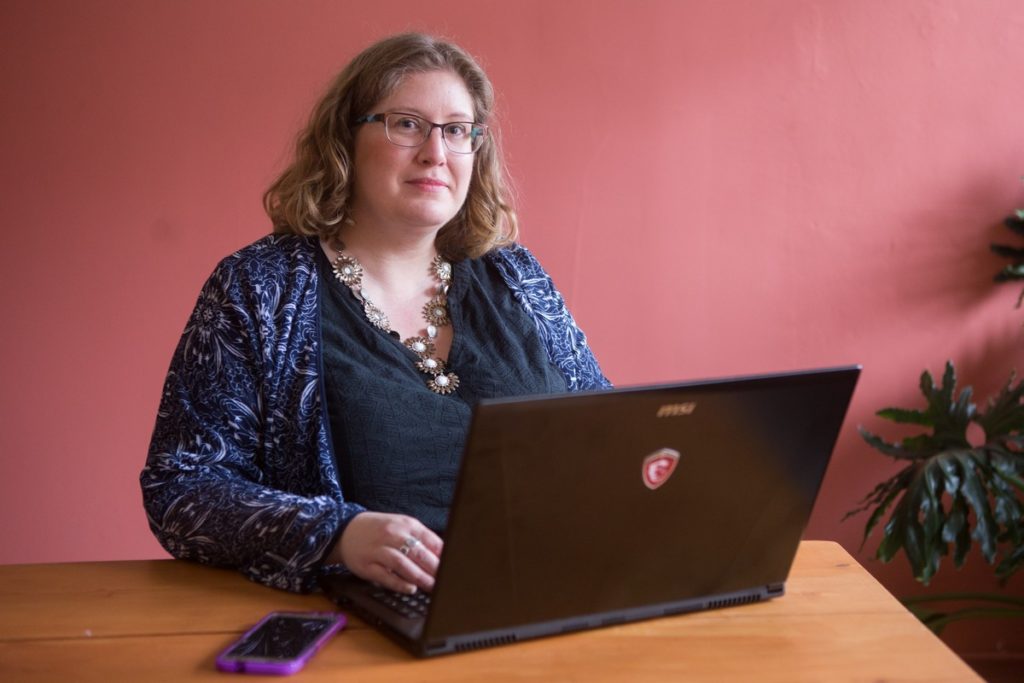
Let’s dig deep. Every Monday, I send out my Body Liberation Guide, a thoughtful email jam-packed with resources for changing the way you see your own body and the bodies you see around you. And it’s free. Let’s change the world together.
Hi there! I'm Lindley. I create artwork that celebrates the unique beauty of bodies that fall outside conventional "beauty" standards at Body Liberation Photography. I'm also the creator of Body Liberation Stock and the Body Love Shop, a curated central resource for body-friendly artwork and products. Find all my work here at bodyliberationphotos.com.
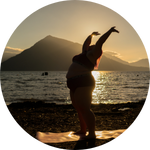
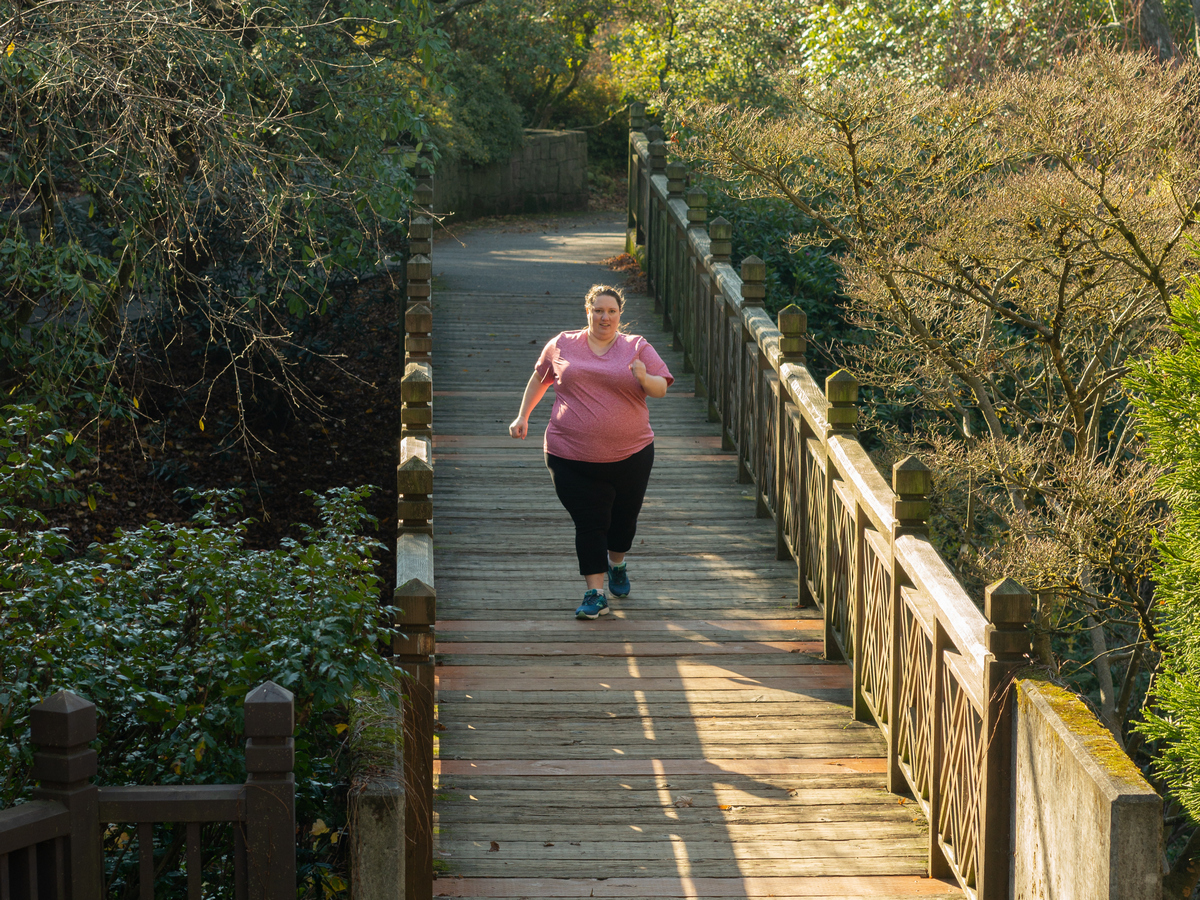
![Illustrated Art Stock: Plus Size Woman Covered with Flowers [Body Liberation Stock exclusive] - Body Liberation Photos & Stock](https://bodyliberationphotos.com/wp-content/uploads/2024/09/Illustrated-Art-Stock-Plus-Size-Woman-Covered-with-Flowers-Body-Liberation-Stock-exclusive-94337-600x600.jpg)
![Illustrated Art Stock: Plus Size Woman Twirls in a Skirt [Body Liberation Stock exclusive] - Body Liberation Photos & Stock](https://bodyliberationphotos.com/wp-content/uploads/2024/09/Illustrated-Art-Stock-Plus-Size-Woman-Twirls-in-a-Skirt-Body-Liberation-Stock-exclusive-94328-600x600.jpg)
![Illustrated Art Stock: Plus Size Woman Twirls in a Skirt [Body Liberation Stock exclusive] - Body Liberation Photos & Stock](https://bodyliberationphotos.com/wp-content/uploads/2024/09/Illustrated-Art-Stock-Plus-Size-Woman-Twirls-in-a-Skirt-Body-Liberation-Stock-exclusive-94323-600x600.jpg)
![Illustrated Art Stock: Plus Size Woman with Hands Over Breasts [Body Liberation Stock exclusive] - Body Liberation Photos & Stock](https://bodyliberationphotos.com/wp-content/uploads/2024/09/Illustrated-Art-Stock-Plus-Size-Woman-with-Hands-Over-Breasts-Body-Liberation-Stock-exclusive-94318-600x600.jpg)
![Illustrated Art Stock: Plus Size Woman with Hands Over Breasts [Body Liberation Stock exclusive] - Body Liberation Photos & Stock](https://bodyliberationphotos.com/wp-content/uploads/2024/09/Illustrated-Art-Stock-Plus-Size-Woman-with-Hands-Over-Breasts-Body-Liberation-Stock-exclusive-94313-600x600.jpg)
